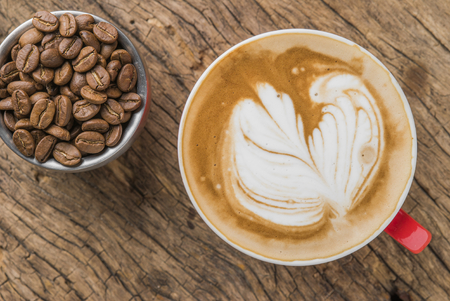Introduction: The Year-Round Love Affair with Coffee
Coffee holds a special place in the hearts of Britons, permeating daily routines from early morning commutes to leisurely weekend catch-ups. Across the United Kingdom, coffee culture has evolved into a vibrant tapestry woven through high street cafés, independent roasteries, and cherished home rituals. Unlike fleeting trends, Britain’s affection for coffee endures through every season, shaping the way people gather, work, and unwind. Yet, while the love for coffee remains constant, the ways in which it is enjoyed shift subtly as the year unfolds. From warming winter brews to refreshing summer sips, seasonal changes influence both preferences and practices, adding a dynamic layer to this national ritual. This article explores how Britons adapt their coffee habits throughout the calendar year, reflecting not just changing weather but also evolving tastes and traditions.
Winter Warmers: Cosy Brews and Comforting Rituals
As the British winter sets in, bringing with it chilly mornings and early evenings, coffee rituals across the UK take on a distinctively comforting character. The desire for warmth and solace becomes paramount, leading many Britons to reach for heartier, spiced coffees that promise both flavour and comfort. Cafés and homes alike start to feature drinks such as gingerbread lattes, cinnamon cappuccinos, and even mulled coffee blends, echoing traditional seasonal spices familiar from festive fare.
The act of enjoying a winter coffee goes beyond the beverage itself—it often transforms into a cherished ritual. Many people indulge in these warming drinks alongside a sweet treat, such as a buttery mince pie or a thick slice of fruitcake. This pairing is not just about taste; it’s about creating a small moment of respite from the biting cold outside. Below is an overview of some popular winter coffee pairings found throughout Britain:
Coffee Type |
Typical Pairing |
Regional Twist |
|---|---|---|
| Gingerbread Latte | Mince Pie | Yorkshire Parkin Cake |
| Cinnamon Cappuccino | Victoria Sponge Slice | Scottish Shortbread |
| Mulled Coffee Blend | Stollen or Panettone | Welsh Bara Brith |
| Classic Flat White (extra hot) | Fruit Scone with Jam & Cream | Bakewell Tart (Midlands) |
The emphasis during winter is on indulgence and warmth—both physical and emotional. Whether enjoyed alone as a morning pick-me-up or shared among friends in a bustling café, these seasonal rituals offer Britons a way to embrace the long nights with good cheer and plenty of flavour. In this way, coffee becomes more than just a drink; it is woven into the very fabric of British wintertime culture.

3. Spring Awakenings: Lightening Up and Experimenting
With the first hints of spring in the air, Britons find themselves seeking out coffee experiences that mirror the season’s sense of renewal and lightness. As days grow longer and gardens begin to bloom, there’s a noticeable shift towards brighter, more floral notes in coffee. Cafés across the UK start highlighting single-origin beans from regions like Ethiopia or Kenya, known for their lively acidity and delicate aromas. For many, this is the time to move away from heavier blends enjoyed during winter and embrace cups that feel as fresh as the season itself.
The arrival of spring also sparks a spirit of experimentation. Coffee lovers might swap their trusty cafetières for pour-over methods like V60s or Chemex, which are particularly well-suited to bringing out nuanced flavours in lighter roasts. Some adventurous souls dabble with cold brew even before summer properly arrives, finding its crisp profile perfectly suited to a sunny afternoon. At home, Britons may invest in hand grinders or new brewing gadgets, eager to fine-tune their technique and explore the subtle differences each method can bring.
This willingness to try something new isn’t limited to brewing equipment; it extends to milk choices too. Oat and almond milks gain popularity not just for dietary reasons but also because they pair so well with floral coffees, enhancing rather than masking delicate flavours. In essence, spring is when the British coffee ritual feels most alive—open to change, inspired by nature’s own transformation, and always ready for a bit of playful experimentation.
4. Summer Sips: Iced Coffees and Alfresco Enjoyment
As temperatures rise and the days stretch longer, Britons enthusiastically embrace a shift in their coffee routines, trading steaming cups for chilled, refreshing alternatives. The summer months have witnessed a noticeable surge in the popularity of cold brews, frappés, and iced lattes across the UK, with both independent cafés and high street chains expanding their menus to cater to this seasonal demand. This evolution is more than a simple matter of temperature; it reflects deeper changes in how people choose to enjoy their coffee socially during Britain’s fleeting warm spells.
The Rise of Cold Coffee Culture
While hot tea has long held its place as a national staple, recent years have seen cold coffee drinks become an essential part of British summertime culture. Innovations like nitro cold brew and artisan iced flat whites now feature prominently at local coffee shops, demonstrating that taste and presentation are just as important as refreshment. High street favourites such as iced cappuccinos and caramel frappés offer a sweet escape from the heat, while many smaller cafés experiment with locally sourced ingredients—think elderflower syrup or British berries—to create unique seasonal specials.
Popular Summer Coffee Choices in the UK
| Coffee Type | Description | Typical Setting |
|---|---|---|
| Cold Brew | Slow-steeped coffee served over ice; smooth and less acidic | Independent cafés, garden parties |
| Iced Latte | Espresso with cold milk over ice; creamy and mild | High street chains, takeaways for park strolls |
| Frappé/Blended Drinks | Sweetened, blended coffee with ice; often topped with cream | Coffee shops, outdoor festivals |
| Nitro Coffee | Cold brew infused with nitrogen for a creamy texture | Specialty cafés, pop-up markets |
Alfresco Coffee Moments: Parks, Gardens & Pavements
The British love affair with outdoor spaces becomes especially apparent during summer. Cafés spill onto pavements with bistro tables and parasols, transforming urban landscapes into vibrant hubs of sociability. In leafy parks and botanical gardens, groups gather on picnic blankets or benches to savour iced coffees alongside pastries or homemade cakes—turning ordinary moments into memorable rituals. It is not uncommon for friends to meet for takeaway lattes before strolling around Hyde Park or to see families sharing iced mochas beneath the shade of ancient oaks.
Coffee Rituals Go Social
This outward migration of coffee culture fosters connection. Whether it’s colleagues catching up outside the office or strangers striking up conversations while queuing for a mobile coffee van at a summer fête, these rituals help reinforce community ties. In this season, coffee is as much about atmosphere as flavour—a shared experience that marks the joys of British summer living.
5. Autumn Transitions: Spiced Favourites and Back-to-School Buzz
As the British summer fades and the crispness of autumn begins to settle in, coffee rituals across the UK undergo a noticeable shift. The arrival of September not only brings a change in weather but also marks the return to familiar routines following the relaxed pace of summer holidays. For many Britons, this is a time when their coffee preferences take a distinct turn towards richer, comforting flavours.
Spiced lattes, most notably the pumpkin spice latte, make their highly anticipated return to high street cafés and independent roasteries alike. While the phenomenon may have originated elsewhere, it has found a loyal following among British coffee lovers who appreciate warming notes of cinnamon, nutmeg, and clove as temperatures drop. These seasonal blends evoke an almost nostalgic sense of cosiness that resonates with the collective mood as jumpers are dug out from wardrobes and evenings draw in earlier.
Alongside these spiced favourites, there is a clear uptick in demand for heartier brews—think mochas, caramel-infused flat whites, and even more indulgent creations featuring gingerbread or toffee syrups. The choice of milk often shifts too, with oat and almond options proving popular for their creamy texture that pairs well with autumnal spices.
The ‘back-to-school’ buzz is palpable in both homes and workplaces. Parents returning to the school run reach for takeaway coffees on brisk mornings, while office workers re-establish their daily routines with a strong cup to combat post-holiday sluggishness. Local coffee shops notice an increase in footfall during early mornings and lunchtime as commuters seek a pick-me-up and students gather for group study sessions over mugs of steaming cappuccino.
This period of transition highlights the adaptive nature of British coffee culture—one that responds thoughtfully to both environmental cues and the social rhythms of the calendar. Autumn’s arrival invites not just new flavours but also renewed energy, offering comfort and motivation as Britons settle into the steady cadence of everyday life once more.
6. Regional Nuances and British Traditions
Across the United Kingdom, coffee culture is far from homogenous. The way Britons adapt their coffee rituals throughout the year is shaped not just by the weather, but also by local customs and regional quirks. In metropolitan hubs like London or Manchester, cosmopolitan cafés introduce global influences—think Scandinavian-style filter coffee in Shoreditch or Italian espresso bars in Soho—which are often reflected in seasonal menu rotations and specialty offerings. Yet, travel north to Edinburgh or Glasgow, and you’ll discover a devotion to cosy, independent cafés that emphasise warmth during chilly months, with hearty blends and home-baked treats that echo Scottish hospitality.
The Blend of Coffee and Tea Rituals
What truly distinguishes the British approach is the seamless intertwining of coffee and tea traditions. Afternoon tea remains a cherished institution, but many Britons now opt for a flat white or a well-pulled espresso alongside their scones and finger sandwiches, especially as spring gives way to summer. It’s not uncommon to see cafés offer both specialty teas and artisan coffees on their seasonal menus, allowing patrons to pivot between hot brews on rainy days and iced concoctions when the sun makes its rare appearance.
Local Cafés: Community Hubs Year-Round
In market towns and coastal villages, the local café often acts as a social anchor. Here, the pace is slower, and coffee drinking rituals are intimately tied to communal rhythms. During winter, locals might gather for spiced lattes beside a wood-burning stove, while summer brings open doors and outdoor seating—perfect for people-watching with an iced Americano. These establishments frequently source beans from British micro-roasters, reflecting a growing pride in regional provenance that shifts with each season’s harvest.
Distinctly British Adaptations
The adaptive spirit of British coffee culture is perhaps most evident in its willingness to hybridise old with new. Seasonal drinks may feature traditional flavours—think rhubarb syrups in spring or mince pie-inspired lattes at Christmas—while others borrow from continental Europe or further afield. Still, whatever the latest trend, there’s always a nod to British sensibilities: a preference for balance over boldness, an emphasis on hospitality, and an enduring respect for both tea and coffee rituals as comforting constants through Britain’s ever-changing seasons.
7. Conclusion: The Evolving British Coffee Identity
Reflecting on the journey through the seasons, it becomes clear that British coffee culture is as dynamic and adaptive as the weather itself. Each shift in climate prompts subtle changes in daily rituals, from the comforting embrace of a winter flat white to the refreshing allure of an iced latte on a summer afternoon. These seasonal adjustments are not merely about taste, but about community, mood, and the desire to connect with both tradition and innovation. The adaptability of British coffee lovers is evident in their willingness to explore new beans, brewing methods, and café experiences throughout the year. This flexibility has fostered an evolving identity—one that respects heritage yet eagerly embraces change. Ultimately, it is this very adaptability that ensures coffee remains a meaningful part of British life, no matter the season. The ritual endures, shaped by time and temperature, always ready for the next shift in weather or whim.


